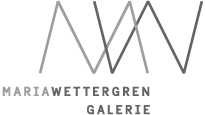
REPRESSION
REPRESSION is revealed as lying under the façade of a neutral and anonymous workspace in Mountain […]. The mountain literally grows out of depression; as the adjustable height office table is lowered, contour lines spring up from the surface and its various strata are revealed. The ‘mountain’ consists of layer upon layer of office spaces, from lofty boardroom to cavelike telesales cabin. The director’s concealed control centre hangs ominously at the mountain’s core, holding the structure in check with its eyeless gaze.
Mountain […] delves into a repressed emotional landscape whose hidden heights and unplumbed depths often exist within so-called ‘flat’ office structures, but which nonetheless go undiscussed in company board rooms and unrecorded in corporate workflow charts and management diagrams.
A R T I S T
“We made this work for an exhibition in a showroom which doubled as the headquarters for the company that manufactured the original adjustable height table. The employees were on permanent display in their office, both to the public and to the company’s boss, who sat behind pot plants in a glass walled office above the showroom floor. The set-up reminded us both of this traveller’s case, in which there is ‘a place for everything and everything is in its place’, and of Jeremy Bentham’s panopticon, a prison design in which the inmates’ cells are organised around the periphery of a cylindrical building, all overlooked by a screened guard’s viewing point. Whether the guard was there or not, the prisoners were to be controlled by the notion that they might, at any time, be on view.”
M U S E U M
“The traveller’s case is carefully partitioned to allow for any item a gentleman away from home might need. The construction of the case makes introducing other items than the pre-approved and foreseen virtually impossible. They simply will not fit in. In such a way the case limits its owner’s possibilities and thereby subtly polices his behaviour. It could easily be construed as a Mountain of Depression in miniature. When we no longer wonder whether or not the guard is watching us and begin subconsciously to assume that he always is, then the prison doors are no longer needed. The public museum as an institution is more or less the same age as Bentham’s panopticon. Bearing that in mind, it is worth noting that these early museums declared that one of their fundamental premises was to instruct people on how to move and speak properly.”
“Power has its principle not so much in a person as in a certain concerted distribution of bodies, surfaces, lights, gazes; in an arrangement whose internal mechanisms produce the relation in which individuals are caught up.”
MICHEL FOUCAULT
A R T E F A C T D E T A I L S
Traveller’s Case
(1819-38, 1902)
16cmx40cmx27cm
Mahogany, maroquin, silver, ebony, glass, ivory, steel, leather
Mahogany traveller’s case. Brass plate on lid inscribed with the letters ‘FW’. Interior upholstered in green and red maroquin with gold borders. Base contains compartment for notes. Lid houses mirror, behind which space for letters.
The beautifully crafted mahogany traveller’s case was made by the Parisian firm Bardin. They boasted the duke of Orléans as one their customers, which placed their wares at the summit of luxury goods. The case is supposed to have been presented as a gift to the Danish doctor Ludvig Levin Jacobsen by a grateful patient. The lining of the case is made of green and red morocco leather with gilded borders. From their sterling marks the silver items can be dated to the period 1819-1839.
A travelling gentleman of Restoration period France could not hope to live up to his position without the essential utensils of good grooming, a necessity communicated in the French name for this traveller’s case: nécessaire. Among the contents are a razor and shaving brush, a mirror, lead glass perfume bottles and powder boxes, boot buttons and boot hooks, pairs of tweezers and scissors, a gilded silver tongue scraper and an ivory toothbrush, as well as a corkscrew and a silver spirit stove.
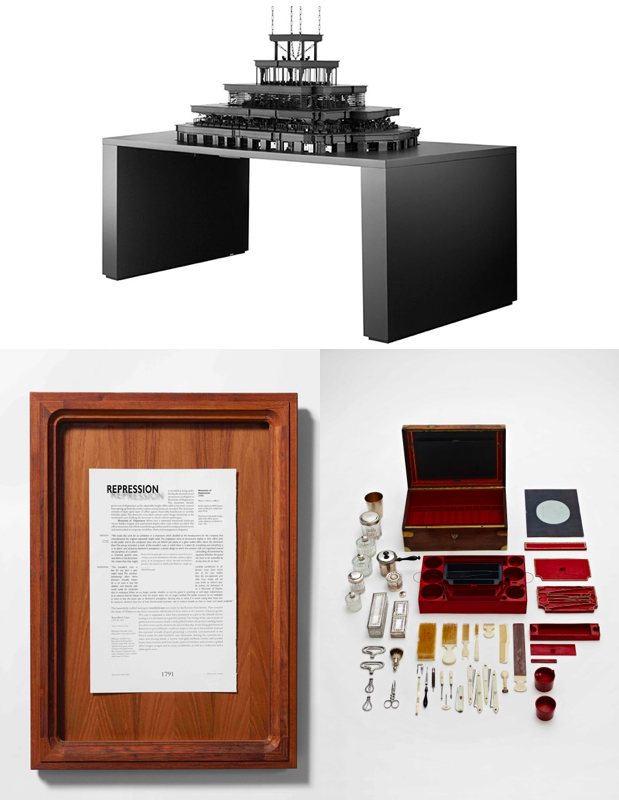
The Mountain […]
2008
Artwork ; Framed text ; Diasec print
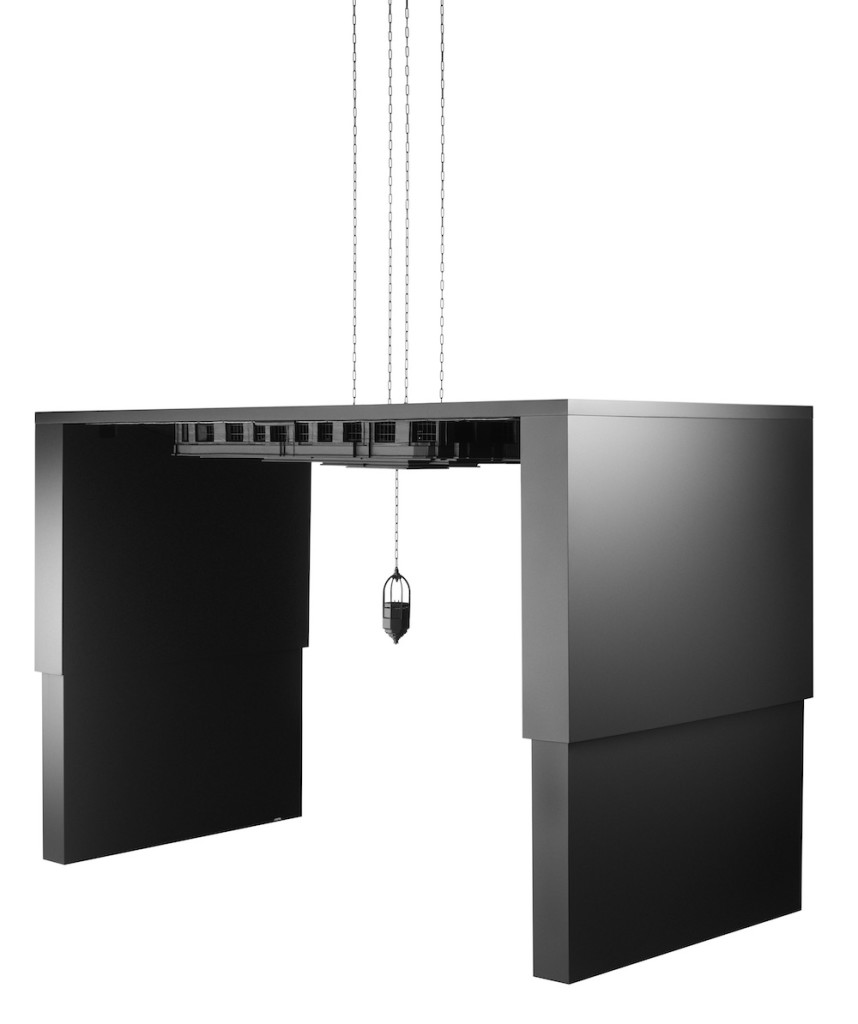
The Mountain […]
2008
Artwork
Beech, plywood, medium density fiberboard, plastic, steel, cardboard, rubberized paint finish.
Mechanical adjustable-height table with office spaces under tabletop, modelled at scale of 1:50
90cm x 120 cm x 180 cm
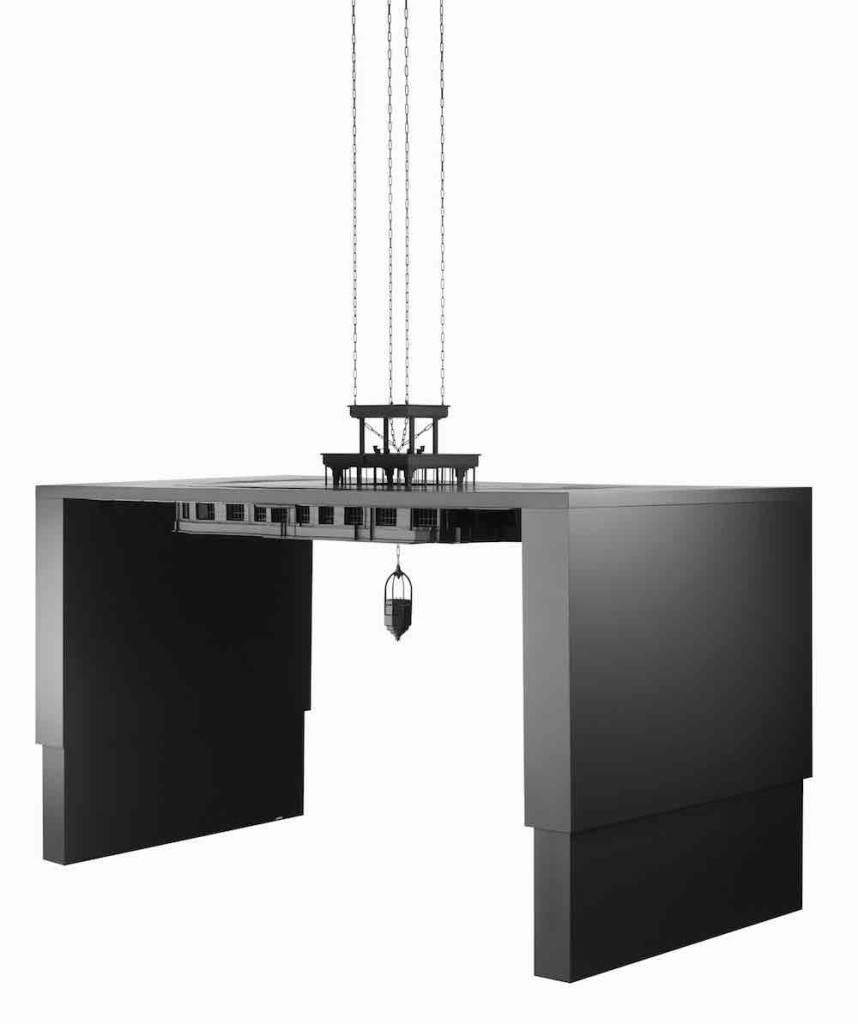
The Mountain […]
2008
Artwork
Beech, plywood, medium density fiberboard, plastic, steel, cardboard, rubberized paint finish.
Mechanical adjustable-height table with office spaces under tabletop, modelled at scale of 1:50
90cm x 120 cm x 180 cm
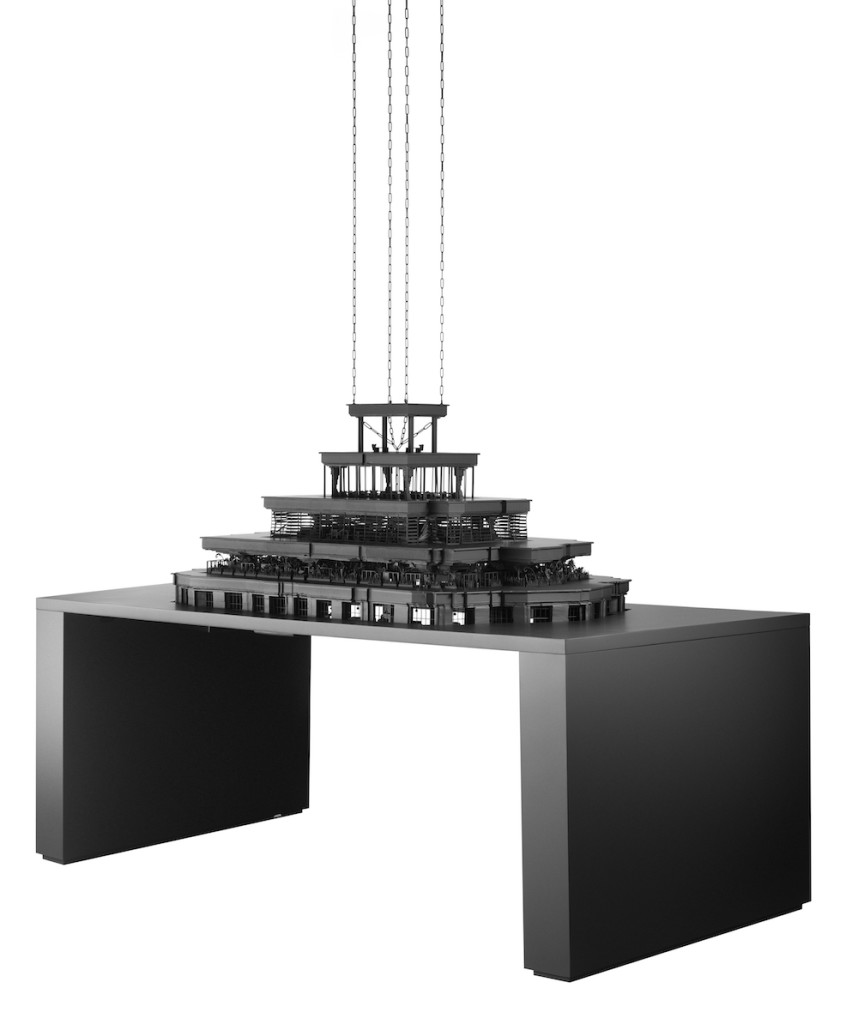
The Mountain […]
2008
Artwork
Beech, plywood, medium density fiberboard, plastic, steel, cardboard, rubberized paint finish.
Mechanical adjustable-height table with office spaces under tabletop, modelled at scale of 1:50
90cm x 120 cm x 180 cm
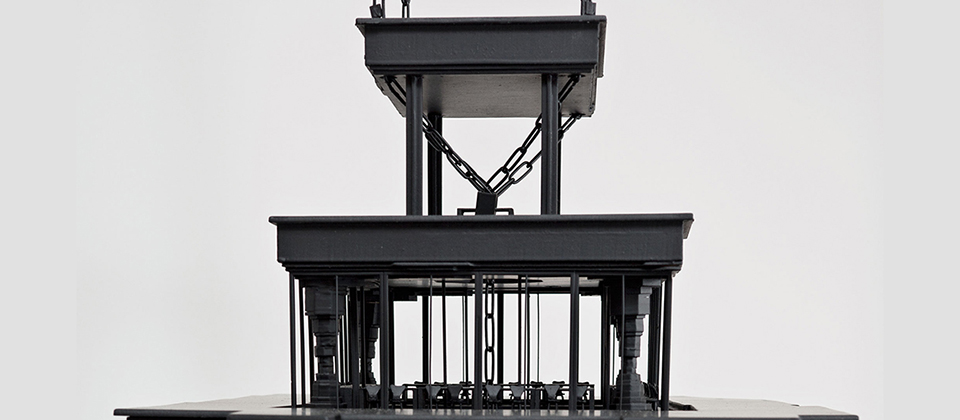
The Mountain […]
2008
Artwork detail
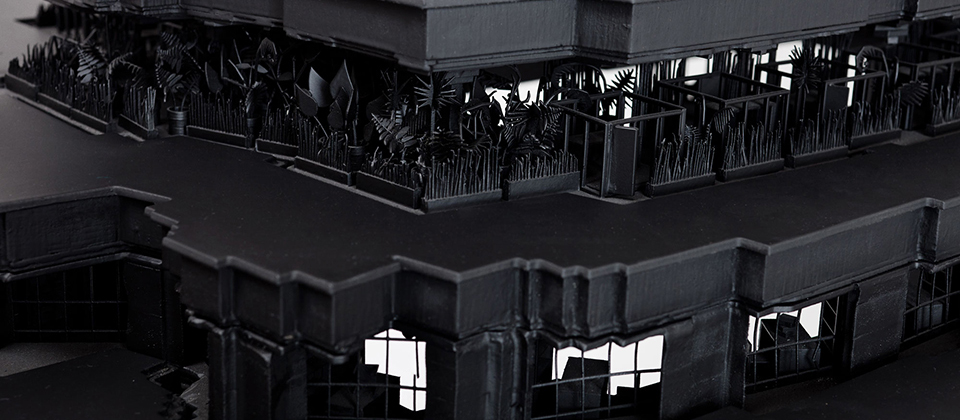
The Mountain […]
2008
Artwork detail
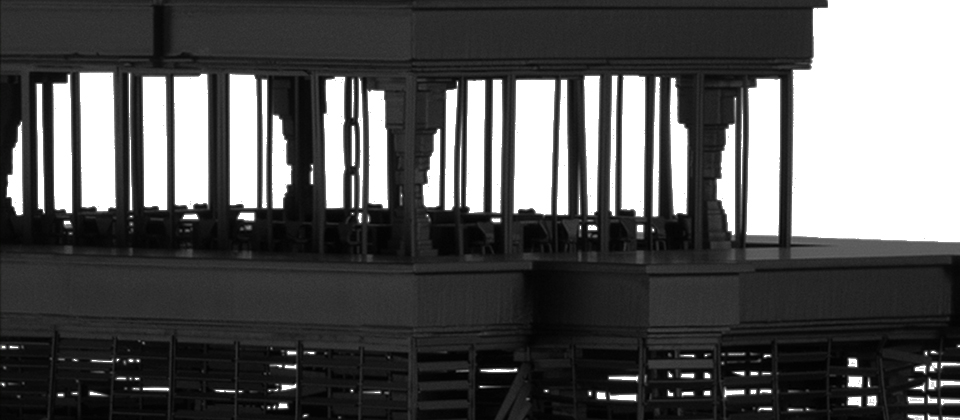
The Mountain […]
2008
Artwork detail
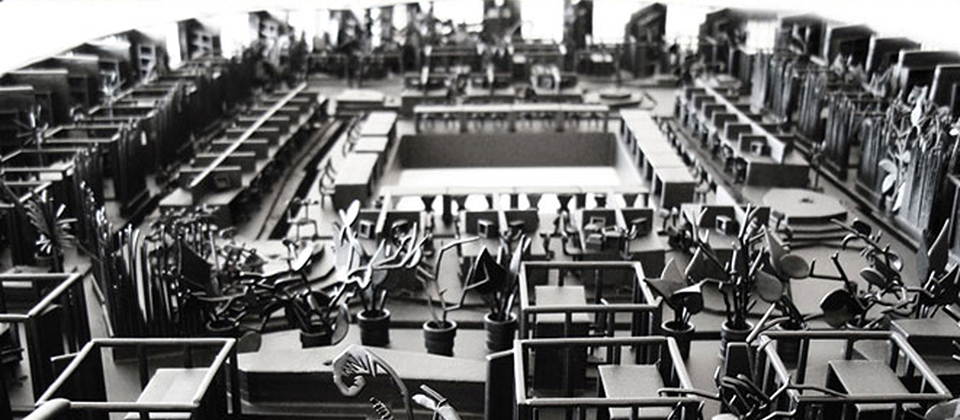
The Mountain […]
2008
Artwork detail
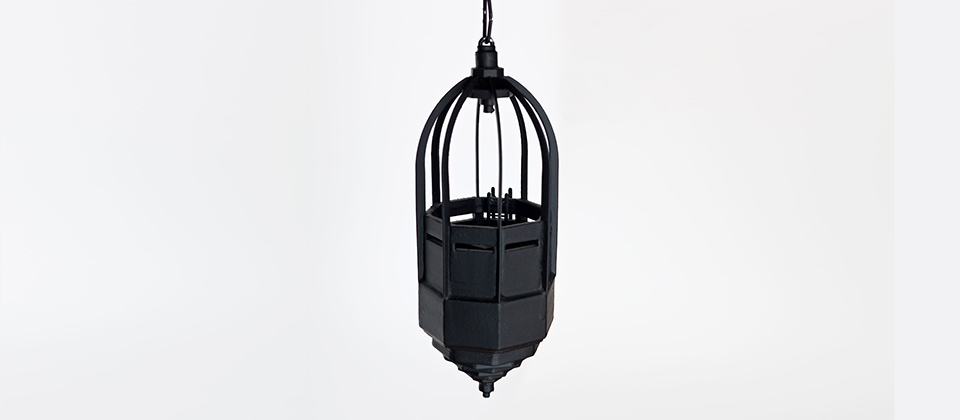
The Mountain […]
2008
Artwork detail
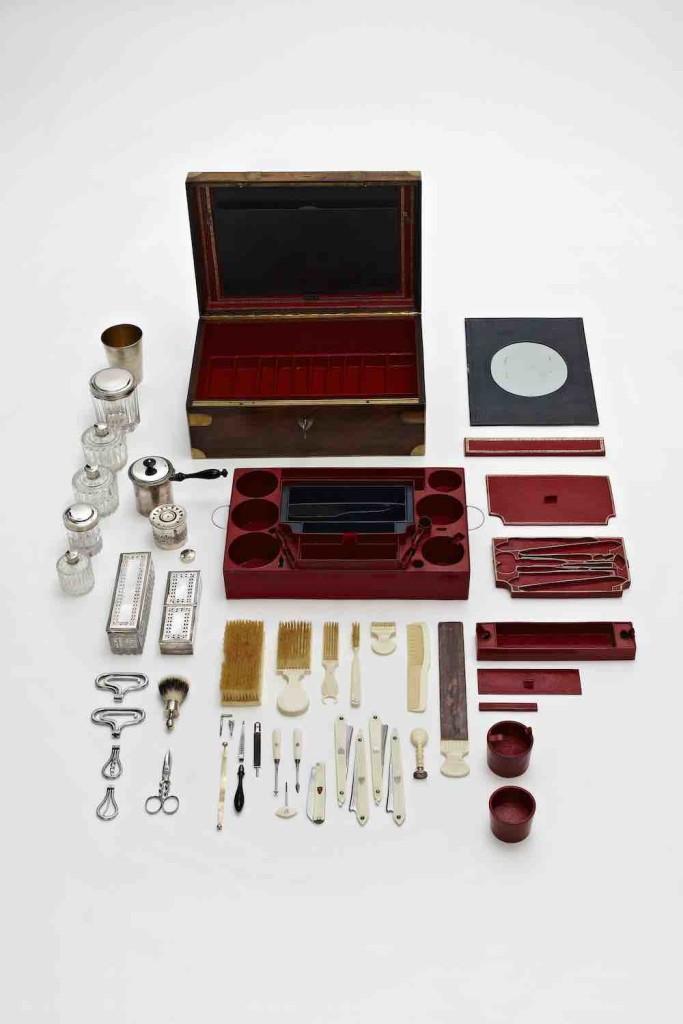
The Mountain […]
2008
Diasec print
68 x 48 x 3 cm
Traveller’s Case
(1819-38, 1902)
Mahogany, maroquin, silver, ebony, glass, ivory, steel, leather
Mahogany traveller’s case. Brass plate on lid inscribed with the letters ‘FW’. Interior upholstered in green and red maroquin with gold borders. Base contains compartment for notes. Lid houses mirror, behind which space for letters.
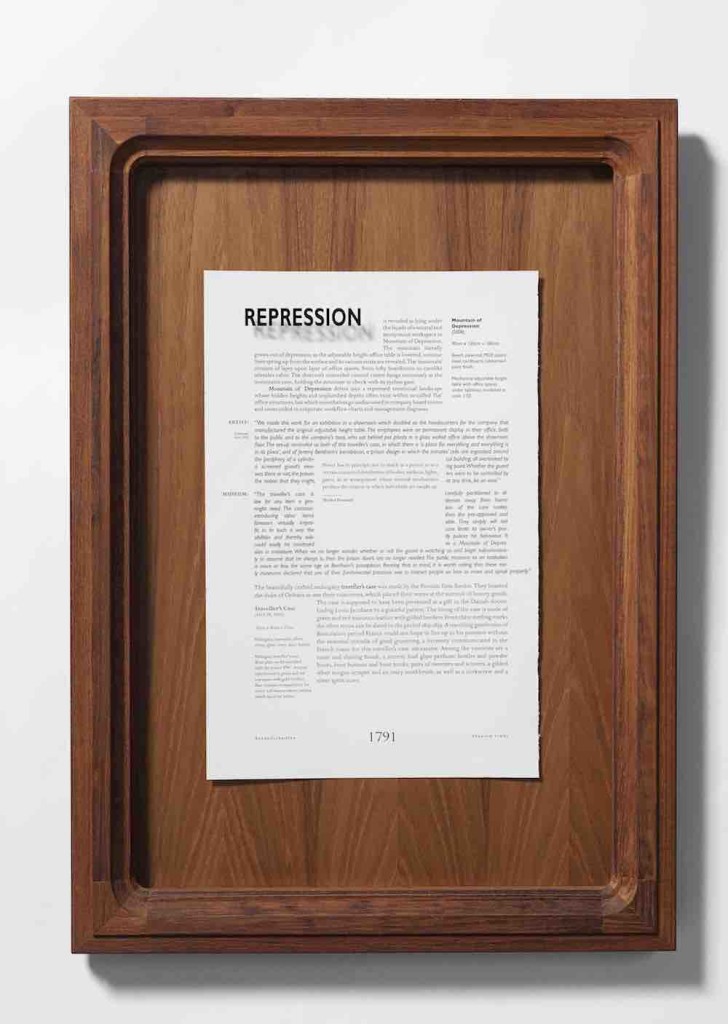
The Mountain […]
2008
Repression
Framed text
68 x 48 x 5 cm
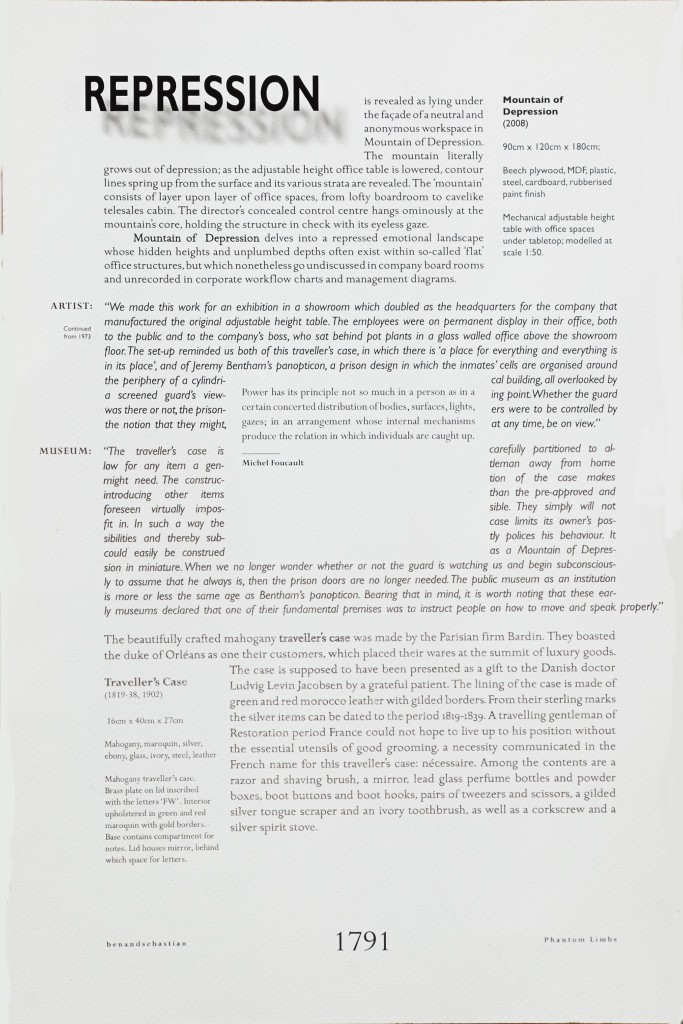
The Mountain […]
2008
Repression
Text
68 x 48 x 5 cm

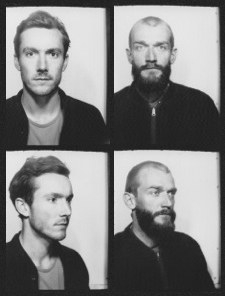
‘The work of the collaborative artist practice, benandsebastian, teeters on a cusp between designed physicality and intangible theories of the mind. Trained in architecture and theoretically versed, their sculptures take on elaborate mechanics and boast intricate detailing, yet speak to vast philosophical and sociological systems. It is impossible to concretely anchor their work, an elusiveness made evident in their recent exhibition at the Designmuseum Danmark, ‘Phantom Limbs’.
Embedded directly within the permanent collection and specifically paired with unexpected inventory from Copenhagen’s Medical Museum, National Museum and the attics of Designmuseum Danmark, their work becomes not only the sculptures on display, but the myriad relationships made between context and object, between body and limb. Evoking the medical sense of phantom limbs, where an amputee still feels the presence of the absent limb, benandsebastian navigate the museum context and call into question the assumed wholeness we expect, perceive and viscerally feel.’
Cassandra Edlefsen Lasch,
independent curator, DAMn magazine, issue 33
